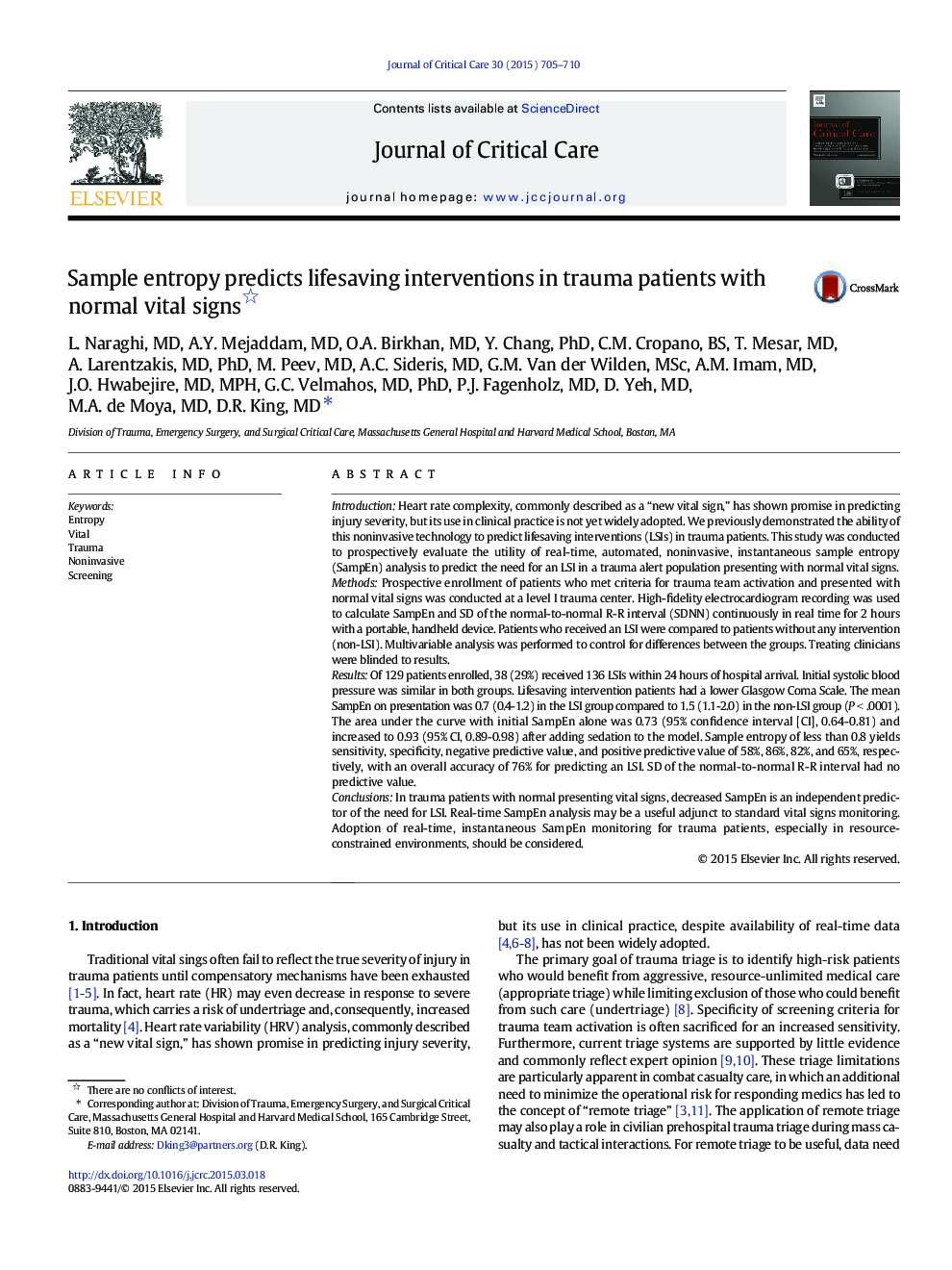| کد مقاله | کد نشریه | سال انتشار | مقاله انگلیسی | نسخه تمام متن |
|---|---|---|---|---|
| 2764519 | 1150922 | 2015 | 6 صفحه PDF | دانلود رایگان |
IntroductionHeart rate complexity, commonly described as a “new vital sign,” has shown promise in predicting injury severity, but its use in clinical practice is not yet widely adopted. We previously demonstrated the ability of this noninvasive technology to predict lifesaving interventions (LSIs) in trauma patients. This study was conducted to prospectively evaluate the utility of real-time, automated, noninvasive, instantaneous sample entropy (SampEn) analysis to predict the need for an LSI in a trauma alert population presenting with normal vital signs.MethodsProspective enrollment of patients who met criteria for trauma team activation and presented with normal vital signs was conducted at a level I trauma center. High-fidelity electrocardiogram recording was used to calculate SampEn and SD of the normal-to-normal R-R interval (SDNN) continuously in real time for 2 hours with a portable, handheld device. Patients who received an LSI were compared to patients without any intervention (non-LSI). Multivariable analysis was performed to control for differences between the groups. Treating clinicians were blinded to results.ResultsOf 129 patients enrolled, 38 (29%) received 136 LSIs within 24 hours of hospital arrival. Initial systolic blood pressure was similar in both groups. Lifesaving intervention patients had a lower Glasgow Coma Scale. The mean SampEn on presentation was 0.7 (0.4-1.2) in the LSI group compared to 1.5 (1.1-2.0) in the non-LSI group (P < .0001). The area under the curve with initial SampEn alone was 0.73 (95% confidence interval [CI], 0.64-0.81) and increased to 0.93 (95% CI, 0.89-0.98) after adding sedation to the model. Sample entropy of less than 0.8 yields sensitivity, specificity, negative predictive value, and positive predictive value of 58%, 86%, 82%, and 65%, respectively, with an overall accuracy of 76% for predicting an LSI. SD of the normal-to-normal R-R interval had no predictive value.ConclusionsIn trauma patients with normal presenting vital signs, decreased SampEn is an independent predictor of the need for LSI. Real-time SampEn analysis may be a useful adjunct to standard vital signs monitoring. Adoption of real-time, instantaneous SampEn monitoring for trauma patients, especially in resource-constrained environments, should be considered.
Journal: Journal of Critical Care - Volume 30, Issue 4, August 2015, Pages 705–710
